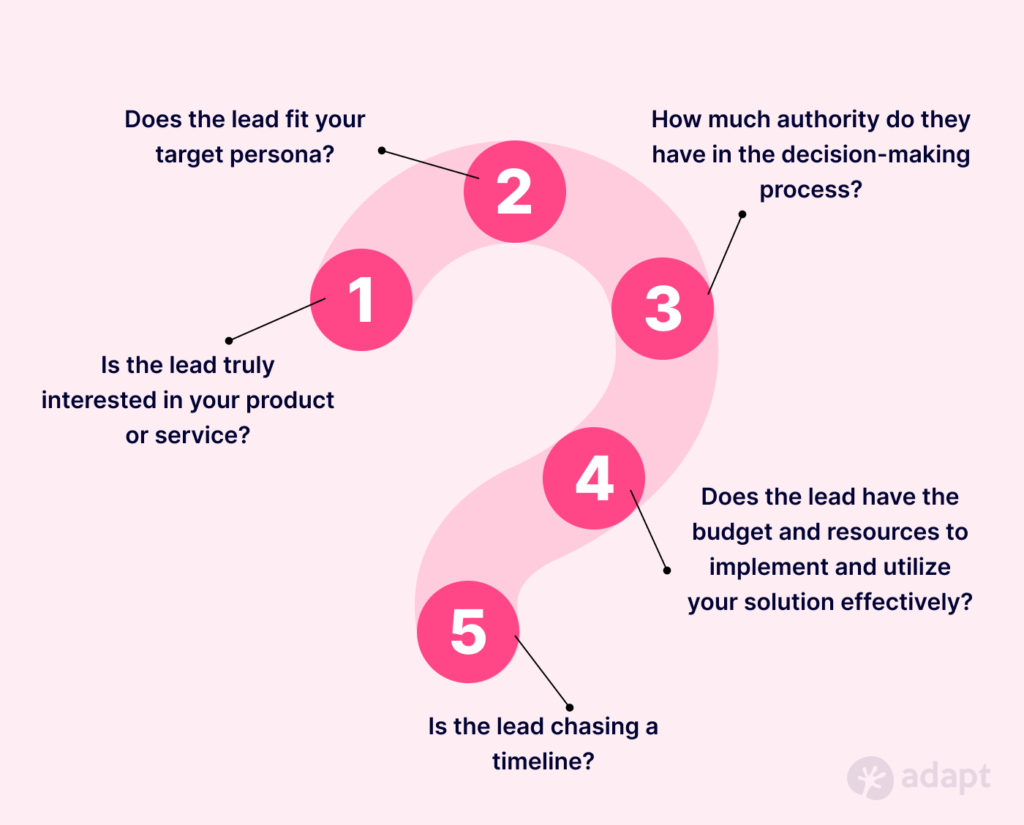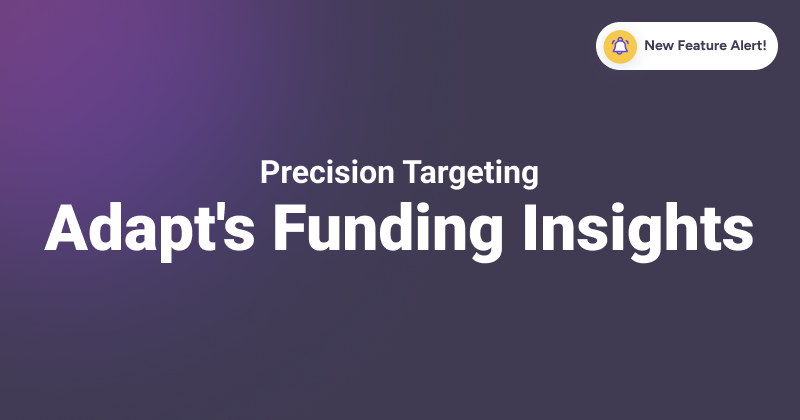Lead qualification is a complex process and often involves dealing with a wide range of prospects. It is easy for sales reps to get overwhelmed when identifying and prioritizing the right lead. An efficient lead qualification checklist is a critical component of your sales strategy that ensures sales teams follow a consistent and reliable process when chasing leads. A structured lead qualification process not only helps prioritize the right leads but also enables sales reps to personalize their sales strategy, tailor their messaging, and follow up later.
The checklist becomes even more crucial when the number of leads increases and the team requires a uniform process to qualify them. But before you get on your discovery call, it is essential to do enough background research. This helps you further weed out the unwanted leads and focus only on promising ones with a higher conversion rate. Here are a few steps you can follow to make sure you are prepared before the first sales call.
Prep Checklist for a Successful First Sales Call
- CRM Investigation: Begin by checking your company’s CRM activity to see if there has been any prior interaction with the potential customer. A quick search can reveal whether they’ve shown interest in your solution before. This insight can be invaluable, especially if unforeseen circumstances prevented them from moving forward earlier.
- Know Your Prospect’s Company: It’s crucial to gather as much information as possible about the prospect’s company. Explore their LinkedIn profiles, visit their company website, and stay updated on any recent news. Understanding their company size and industry can help you tailor your value proposition effectively.
- Acknowledge Your Competition: In the competitive world of B2B, positioning your product as the top choice is a must. To achieve this, you need a deep understanding of your competitors, both traditional and nontraditional. For instance, if you’re selling customer relationship management software, you should be prepared to highlight how your solution surpasses other options on the market. But what if they mention they’re content with spreadsheets or manual processes? You should be ready to address these scenarios as well.
- Prepare Your Agenda: Time is precious during a discovery call. Arm yourself with a list of qualifying questions to extract the necessary essential information.
- Gather Your Resources: Anticipate the potential needs of your lead. What if they request a demo, a price list, or information on available packages? Be well-prepared for these scenarios, ensuring you can deliver the information they seek.
Now that you are ready with all the required information, the next step is to interact with the lead and assess where it stands in the lead qualification process. Here is a checklist you can follow when doing your lead qualification assessment.
Checklist for lead qualification process
- Is the lead truly interested in your product or service?
- Does the lead fit your target persona?
- How much authority do they have in the decision-making process?
- Does the lead have the budget and resources to implement and utilize your solution effectively?
- Is the lead chasing a timeline?

1. Is the lead truly interested in your product or service?
The first step in lead qualification is identifying if the lead truly needs your product. It is normal to be excited in the initial stages, but as the final step comes closer, many customers realize they do not really need the product and step back. Hence, to save yourself the trouble, you can ask your lead these 3 questions:
- What are the current challenges you are facing that our product can help you solve?
- What are your immediate and long-term goals?
These questions uncover their specific needs and objectives. If the lead qualifies, you can analyze their responses carefully and tailor your approach accordingly. Highly interested leads may benefit from personalized demos, while others may require targeted content. This process ensures that you focus your efforts on leads with a genuine interest, ultimately increasing the effectiveness of your lead generation strategy.
2. How much authority do they have in decision-making?
B2B Sales often comprise multiple levels of decision-making. Getting a clear idea of the number of individuals involved in the process or identifying who has the final say will help you qualify a lead better. You can start by asking questions like:
- Who is the final decision maker when choosing a solution for the team?
- Who is the right person to discuss how our solution can help solve your problems best?
Once you know the decision makers, tailor your approach to their level of authority. Efficiently allocate resources by focusing on leads with the power to move forward quickly. By clarifying the decision-making hierarchy, you navigate sales complexities more effectively and increase your chances of successful conversion.
3. Does the lead fit your target persona?
Lead qualification is a vital step that hinges on the creation of detailed buyer personas. These personas encapsulate the characteristics, preferences, and challenges of your ideal customers, serving as a guiding compass for assessing leads. Factors like industry relevance, company size, job roles, and the specific issues and goals of leads are scrutinized to categorize them as either “Ideal Fit” or “Potential Fit.” Importantly, this process remains flexible, evolving in sync with your deepening understanding of your customer base and your organization’s evolving objectives.
This dynamic approach ensures that your lead qualification efforts consistently attract and engage leads that not only meet your current criteria but also align seamlessly with your changing business goals. In the ever-evolving landscape of B2B, adaptability and precision in lead qualification are key to sustainable growth and success.
4. Does the lead have the budget and resources to implement and utilize your solution effectively?
A crucial step in lead qualification involves assessing whether a lead has both the financial means and the technological setup to effectively use your solution. This evaluation goes beyond fitting a persona; it starts by examining their budget to ensure it aligns with your pricing structure and understanding their procurement process to anticipate any delays. It also considers the compatibility of your solution with their existing tech setup and whether they have the IT resources and expertise needed for successful adoption.
Categorizing leads based on their financial readiness and tech proficiency is key to efficient resource allocation. This approach ensures you direct your efforts effectively and communicate in a way that resonates with leads who are not just interested but also prepared to make the most of your offering. This methodology forms the foundation for optimizing conversion rates and accelerating your growth.
5. Is the lead chasing a timeline?
Gauging a lead’s sense of urgency is paramount in the lead qualification process. It directly influences your sales strategy and how you can convert leads into customers. This assessment revolves around understanding if the lead has an immediate need for a solution and if so, their specific timeline for implementation.
Leads can fall into different scenarios: some are actively seeking a solution and require quick action, while others are in the evaluation phase, and some are in the early stages of exploration. Knowing their timeline allows for tailored approaches, whether it’s providing swift solutions, offering detailed product information, or nurturing them with educational content. Efficient resource allocation and matching their urgency with your responsiveness are key to closing deals faster. By integrating this into your lead qualification process, you not only target the right leads but also streamline the sales cycle.
Build a targeted list of leads and improve your conversion rates
Find leads from anywhere on the web with Adapt’s 200M+ verified contact database
Conclusion:
Your lead qualification checklist should be flexible and adaptable as your understanding of your target audience deepens. Regularly reviewing and refining this checklist will help you generate more leads and convert them into customers more effectively. Staying aware of market trends and customer feedback will let you adjust your criteria and stay competitive. By consistently improving your lead qualification process, you’ll not only increase your chances of closing deals faster but also build a strong, long-term customer relationships that drive sustainable growth.


